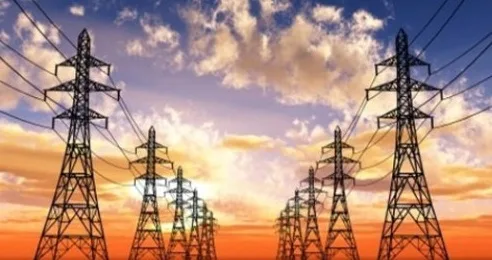Last Updated on October 30, 2025 8:28 pm by BIZNAMA NEWS
R Suryamurthy
India’s simmering debate over electricity sector reform has flared into open confrontation after the All India Power Engineers Federation (AIPEF) accused the Centre of using financial pressure to force states into privatising their power distribution companies (DISCOMs).
AIPEF Chairman Shailendra Dubey said on Thursday that the Group of Ministers (GoM) meeting held on October 10, 2025, had issued a stark warning to six major states—Uttar Pradesh, Andhra Pradesh, Madhya Pradesh, Maharashtra, Rajasthan, and Tamil Nadu—to pick one of three privatisation models or risk losing all central government aid to their power utilities.
“The message was unambiguous—privatise or perish. The Centre has weaponised financial support to push through privatisation under the guise of reform,” Dubey said, calling the move “blackmail of states and workers alike.”
Three Privatisation Routes
According to minutes of the GoM meeting reviewed by South Asian Herald, state utilities have been presented with three choices:
1. Sell a 51% stake in state DISCOMs to private investors, with management control transferred to them. The Centre would take over unsustainable debt and extend a 50-year, zero-interest loan for the private entity’s share.
2. Hand over management of state DISCOMs to private firms while retaining ownership. The Centre would provide five years of financial grants and permit states to absorb all unsustainable debt.
3. List DISCOMs on stock exchanges under SEBI rules, provided they achieve an ‘A’ credit rating and maintain profitability for five consecutive years. Listed entities would receive central grants for infrastructure.
The GoM meeting, which included energy ministers from the six states, also tied central capital expenditure (capex) support to these reforms. States declining all three routes could see central funds withdrawn entirely, AIPEF said.
AIPEF Calls It “Blackmail for Privatisation”
“The Centre’s approach is coercive and undemocratic. None of these options is reform—they are all routes to privatisation,” Dubey said. He also condemned the inclusion of representatives from the All India Discom Association in the GoM meeting, calling it a “conflict of interest.”
“Inviting a body created to promote private sector participation confirms our long-standing allegation that this is a coordinated plan to hand over public assets,” Dubey added.
The AIPEF, along with other electricity employees’ federations, plans to formulate a joint protest strategy at a national meeting in Mumbai on November 3 under the National Coordination Committee of Electricity Employees & Engineers (NCCOEEE).
₹7.4 Lakh Crore Debt Crisis
The GoM meeting was part of a broader central government effort to address the ₹7.42 lakh crore debt mountain choking India’s state-run DISCOMs. Under the proposed reform-linked restructuring scheme, the Centre would absorb or subsidise a portion of “unsustainable debt” amounting to nearly ₹2.74 lakh crore.
The Power Finance Corporation (PFC) data show that state-run utilities have continued to bleed despite repeated bailouts. In FY2023–24, they reported aggregate technical and commercial (AT&C) losses of 16.4%, compared with 12.1% for private operators.
While private DISCOMs posted profits of ₹2,931 crore, state-run utilities booked losses exceeding ₹28,000 crore, pushing their combined debt up from ₹5.9 lakh crore in FY2021–22 to ₹7.4 lakh crore last year.
States on the Edge
Tamil Nadu and Rajasthan are the worst affected, with unsustainable debts of ₹1.38 lakh crore and ₹58,500 crore, respectively—equal to more than half their annual revenue receipts. Even fiscally stronger states such as Maharashtra and Uttar Pradesh face steep liabilities.
The Centre’s restructuring plan offers ₹1.75 lakh crore in infrastructure support over five years, including ₹52,650 crore in equity grants, but only for those states that agree to divestment or listing.
The Political Flashpoint
The confrontation comes just weeks after the Ministry of Power unveiled the Draft Electricity (Amendment) Bill, 2025, which seeks to liberalise India’s ₹15 lakh crore power sector by allowing multiple private players in distribution, enforcing cost-reflective tariffs, and shifting subsidies to Direct Benefit Transfers (DBT).
Critics, including AIPEF and several state governments, say the new bill and the GoM’s push for divestment represent an attempt to centralise control and privatise public infrastructure under the cover of reform.
States like Kerala, Punjab, and Tamil Nadu have already opposed earlier versions of the Bill, calling it “anti-federal” and warning of “tariff shocks” for low-income consumers.
Workers Mobilise Nationwide
AIPEF’s planned mobilisation in November is expected to draw participation from engineers, linemen, and other electricity employees across India. “We will resist any attempt to sell public assets built with taxpayers’ money,” Dubey declared.
With national elections looming in 2026, the growing confrontation between the Centre and state utilities could become a flashpoint—pitting fiscal reform against federal autonomy and workers’ rights.
If the Centre proceeds with its ultimatum, India’s power sector may soon face not just a financial restructuring, but a political reckoning over who truly controls the nation’s energy lifelines.

